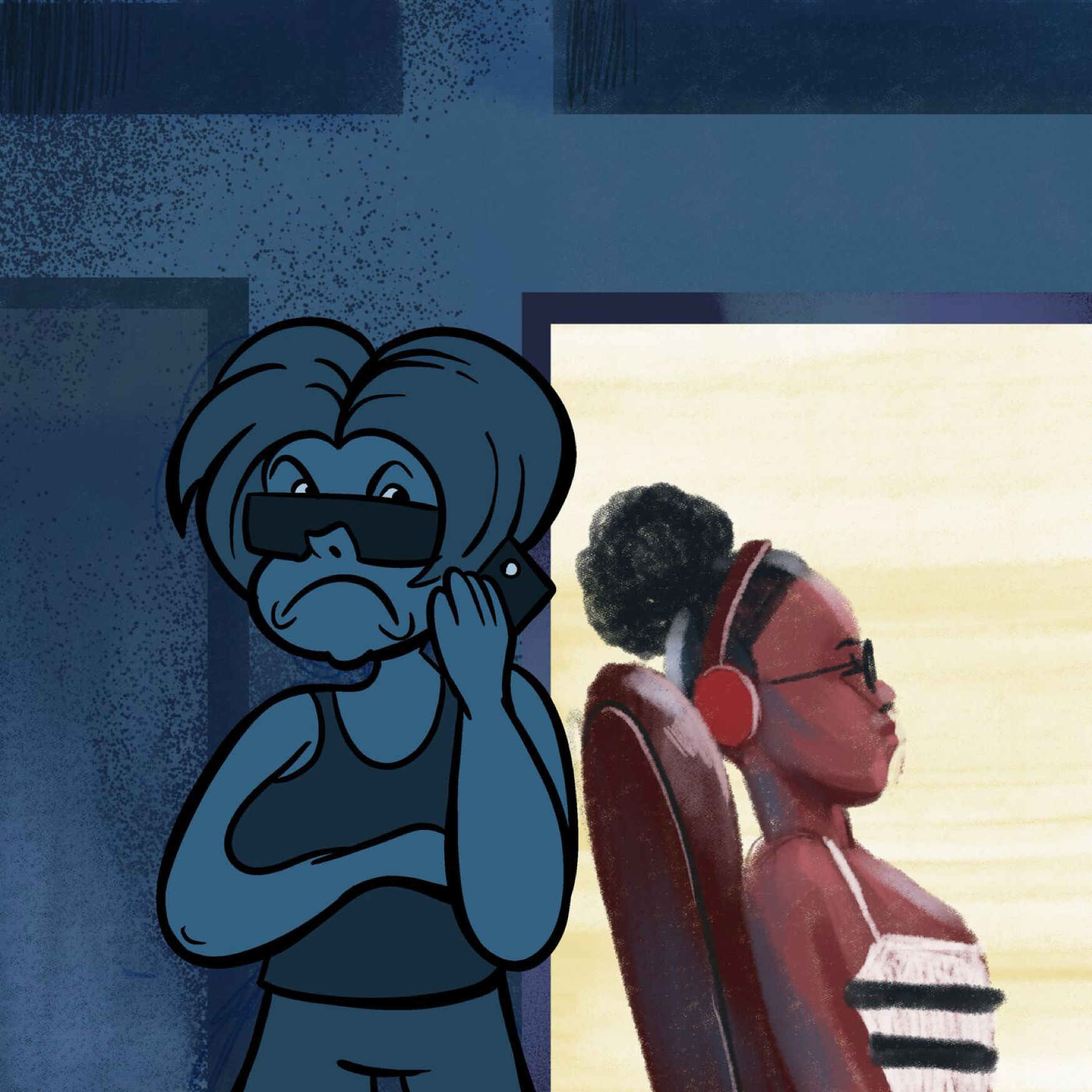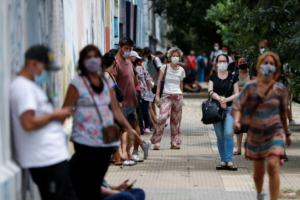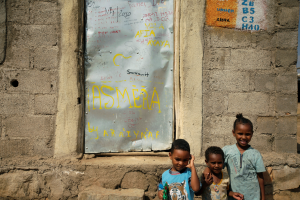There’s no cure for the effects of pervasive discrimination, but there are steps you can take to help heal.
As Black people, we are bombarded by instances of racism every day: Images of police and self-deputized citizens killing Black people. Hospitals shutting down in our communities. Negative stereotypes in media, microaggressions at work, suspicious treatment by store clerks and neighbors. All based on the color of our skin.
These occurrences leave mental and emotional injuries, known as racial trauma, that can lead to anxiety and depression. The effects of daily discrimination also cause long-term physical harm. They eat away at our bodies, manifesting as heart disease, headaches, gastrointestinal issues, and other ailments.
“Trauma isn’t only this verbalized, mental, heavy process. It also lives in the body,” said Ayanna Abrams, a psychologist who founded Ascension Behavioral Health in Atlanta. “When you add racialized stress, it leads to this form of weathering on the body that shows up physically, physiologically, and emotionally.”
If not treated properly, symptoms of racial trauma can become chronic. Stress exacerbates many of the illnesses that disproportionately affect Black people, like blood disorders and heart disease.
Since 2022, Vox has partnered with the Black-led nonprofit newsroom Capital B to publish inclusive, rigorous journalism for our audiences.
A utopian vision for Black life
What to do about mass incarceration
The origins of the Juneteenth flag
The growing movement for reparations in health care
Our collaboration launched with a comprehensive look at Juneteenth as it became the nation’s newest federal holiday. You can read the entire discrimination package here.
“When you don’t feel safe in certain environments, whether it be your workspace, your neighborhood, or your religious group, or things in your community, all of those things can add up to this cumulative stress and tension that your body is holding because you don’t feel safe,” Abrams said. “You’re also engaging in a lot of the mental labor because you’re trying to seek safety all the time.”
But racial trauma is not formally recognized in the Diagnostic and Statistical Manual of Mental Disorders, the manual used by health care experts to diagnose mental health disorders, meaning there’s no official symptoms or guidance on how to treat them.
“There’s been a lot of research on how [racial trauma] shows up in the lives of Black folks who’ve been facing that for centuries and generations,” said Bobby Gueh, a school counselor and professor of psychology at Georgia State University. “How do we deal with that if we don’t have, you know, the systemic structures and medical support to be able to address it?”
But there are ways to cope with everyday racism. Capital B talked to mental health experts to find practical tools Black people can use to heal racial trauma.
Build racial pride
Finding ways to build pride in your Blackness can ease tension from racial trauma. Surround yourself with images of Black beauty: Display African artifacts in your home or hang up the “Good Times” painting from Grandma’s house. Celebrate Blackness all year, from Juneteenth to Kwanzaa. And make sure you know your history — the triumphs as well as the tragedies.
“Go through the history and learn about not just the horrors of slavery or the horrors of the Jim Crow South. Let’s find ways to celebrate some of the heroes and sheroes,” Gueh said. “Black folks should not just be celebrating Black history during February.”
Another way to build racial pride: music. Listen to artists who send messages about Blackness being beautiful, like India.Arie, Beyoncé and Solange, Kendrick Lamar, and others who share messages of beauty through a lens of Blackness.
The key is to find ways to ignore white standards and create your own, said Darius Washington, a licensed counselor at Out of the Box Counseling. Those “white standards” lead us to believe that we need to change the way we talk, look, and think.
“We have to make our own standard because we’ve been living and trying to assimilate to a culture and … a standard that just isn’t ours,” Washington said. “Creating our own standard for things like care, love, beauty, and intelligence.”
Building racial pride can create better outcomes for Black children, in particular, according to a study published in the National Library of Medicine. Black children whose parents endorse cultural pride often exhibit fewer behaviors attributed to anxiety, the study found. They draw their children’s attention to cultural strengths that have supported Black people in American society, making them better prepared for subtle and blatant incidents of racism.
“When you talk about racial healing and how we deal with racial trauma, it is extremely important for us to start to debunk the myth of inferiority,” Gueh said.
This racial healing doesn’t happen in isolation, but instead with groups of people, like your family and friends. Family storytelling, for instance, is a good tool to build up Black pride. Speak with your elders to gain understanding of your family history. This way, you’ll understand the cultural history behind your lineage, Abrams said, from the music your family loves to the food they consume.
Find a safe space focused on your identity
When starting a new hobby, we may feel isolated as we search for a community that shares our interests. That’s where race-based affinity groups can be helpful. From reading to roller skating to gardening, Black hobbyists have built communities to support one another’s creativity and passions, free from microaggressions and racial stress.
“Organizing [safe spaces] has always been part of grassroots movements,” Abrams said. “We organize and mobilize, and that is a way to access cultural safety toward feeling more psychologically safe, being around people who have shared experiences, shared motivation, and can cultivate those spaces that just feel safe to be yourself.”
But your community isn’t going to come knocking at your door. You have to find it, which can be a difficult task when experiencing symptoms of racial trauma, like depression and anxiety.
In your own neighborhood, a quick Google search can lead you to Black-centered book clubs, running groups, or any hobby you’re interested in. If jumping into in-person meetups feels like too much, you can often find common interests with Black people on Facebook. There’s an entire community for Black women who shop at Trader Joe’s.
Joining one of the historic Divine Nine sororities or fraternities will connect you with a legacy organization that focuses on giving back to the community. You can pledge to a Greek organization long after college — just consider the requirements and membership process.
Washington joined Kappa Alpha Psi Fraternity in 2015 while attending Shaw University. Through his experience, Washington said he found pride in being a business-oriented, career-focused Black man. He also enjoys being able to seek direction from his older fraternity brothers.
“One of the driving factors for me joining my fraternity was to get some type of mentorship,” Washington said. “I have brothers that I can call up right now that went to Shaw University. They went to Shaw in the ’70s, the ’80s, the ’90s, and they’re in their 60s … so I can go to them for wisdom and guidance.”
Limit your use of social media
It’s a cycle: A Black person is killed by a police officer or a self-deputized citizen. There’s a dramatic waiting game for officials to release the footage. The often-gruesome video then spreads across social media platforms, a display of racial violence that becomes difficult to avoid.
The ongoing news coverage further traumatizes Black viewers. Sometimes, we can’t take our eyes off the images, watching the video over and over again.
“It’s almost like a double-edged sword. You want to know the realities of what’s out there because you don’t want to forget,” said Gueh. “When you see that, you see the deep hatred that still resides in this country.”
The fear that overtakes our bodies when another unjust murder is nationalized is not an uncommon one. Wanda Johnson, whose son, Oscar Grant, was killed by a Bay Area police officer in 2009, told the Associated Press that she couldn’t escape the video of George Floyd’s murder. She described shaking and crying uncontrollably because the video “opened such a wound in me that has not completely closed.”
Experts liken the viral videos of police brutality to public lynchings. The urge to avoid social media altogether is a common coping mechanism, one that experts say is a healthy approach to take.
“I take social media breaks all the time, especially when I’m a bit flustered or I’m trying to accomplish a goal,” Washington said. “I suggest you do it for a week. You’ll really feel the fog in your head start to clear up, and you’ll have more capacity to process certain thoughts.”
There are other healthy ways to distract yourself from the addictive habit of social media, Gueh said. When videos of racial violence go viral, you can open your app settings and turn off autoplay to keep videos looking like still images in your feed. On Twitter, users can “mute” certain terms related to the traumatizing topic. Gueh also encourages parents to get their kids outdoors to stay off of social media.
Take mental health breaks
Racism is unavoidable in our society. We experience microaggressions in our workplaces, which we’re dependent on for our livelihood. We’re followed around stores while shopping for necessities, bringing on symptoms of hypervigilance.
These experiences may send you into fight-or-flight mode as your heart rate speeds up and your breathing patterns change. A mental health break is a useful tool to help you process and calm down after an infuriating interaction. Start by taking a quick walk outside.
“Literally just stepping outside and stepping into sunlight, and having your body produce more vitamin D, is extremely helpful for you,” Abrams said. “If you can’t take a walk around your neighborhood, you may be stepping outside your door or opening your windows first thing in the morning.”
The key to a mental health break is taking time to slow your brain down. When you go on these walks, be more mindful of your surroundings, Washington says. (Be sure to wear sunscreen!)
“You’re walking, but you’re paying attention to your surroundings. You’re paying attention to how your body feels, you don’t have your phone,” he said. “When you walk, you really feel the environment you’re in, you feel what temperature it is. Totally be in the moment, and you’ll actually feel more grounded.”
Meditation is also a useful tool to give your brain a rest, Gueh said. It encourages emotional awareness and deep breathing. You can search guided meditations on YouTube, take a yoga class, or follow along with the Black Lives Matter guided meditation by Candice Nicole (be wary of negative comments from Black Lives Matter detractors on this link).
Sleep is another key component. Watch your daily habits and develop a routine to ensure you’re getting enough. When we are sleep-deprived, racial trauma symptoms like anxiety and restlessness can be exacerbated, Abrams said.
“As a whole, we’re an underslept world and community,” she said. “We’re not taking breaks; we’re going to bed really late. If you’re able to manage your sleep better, you’re able to manage a lot of other things better. Getting six hours of sleep is not enough; seven hours is better, eight hours is best.”
There are many apps you can use to guide meditation and other mental health needs. Washington recommends the Calm app, which LeBron James has lent his voice to. There, you can create meditation plans that target your needs, like developing better sleeping habits or reducing stress and anxiety.
Explore affordable therapy options
Therapy has become more common as awareness of mental illness has grown and stigmas have diminished. But research shows that Black people are far less likely to seek mental health care, in part because of unequal access to health insurance. According to US Census Bureau data, nearly 10 percent of Black people are uninsured, compared to 5.2 percent of white people.
Without insurance, market rates for a single therapy session can be upward of $200. But there are ways to get cheaper mental health care.
When seeking care, ask therapists if they have a sliding-scale fee. On these pay structures, patients with a lower income can pay lower prices. A minimum fee is at the practitioner’s discretion, but for patients below the poverty line, they may be willing to work at an affordable price. Washington says you may be less likely to get a sliding scale at a private practice, so try going to a community agency in your neighborhood to find a therapist.
“At a private practice, people want to charge you what they think they’re worth,” Washington said. “If you go to an agency, especially if you have certain grievances, conditions, or life circumstances going on, they’re most likely able to work with you.”
Open Path Psychotherapy Collective allows people who make less than $100,000 to find mental health practitioners for $40 to $70 for individual sessions. Online therapy websites like Talkspace and BetterHelp also offer lower prices and often take most major insurers.
None of these tactics for addressing racial trauma is a cure-all, and healing is not a linear process. Racism is a pervasive trait of our society, so developing ways to respond to it has to be an ongoing effort over the course of our lives.
“Healing is not this thing that you make it to and then everything is bright,” Abrams said. “That’s why I’m calling it an active, evolving process that … takes its own form as you’re moving through your life processes.”
Kenya Hunter is the health reporter for Capital B Atlanta, where she has reported on the effects of mpox in Atlanta’s Black gay community, the maternal health crisis, and more.




